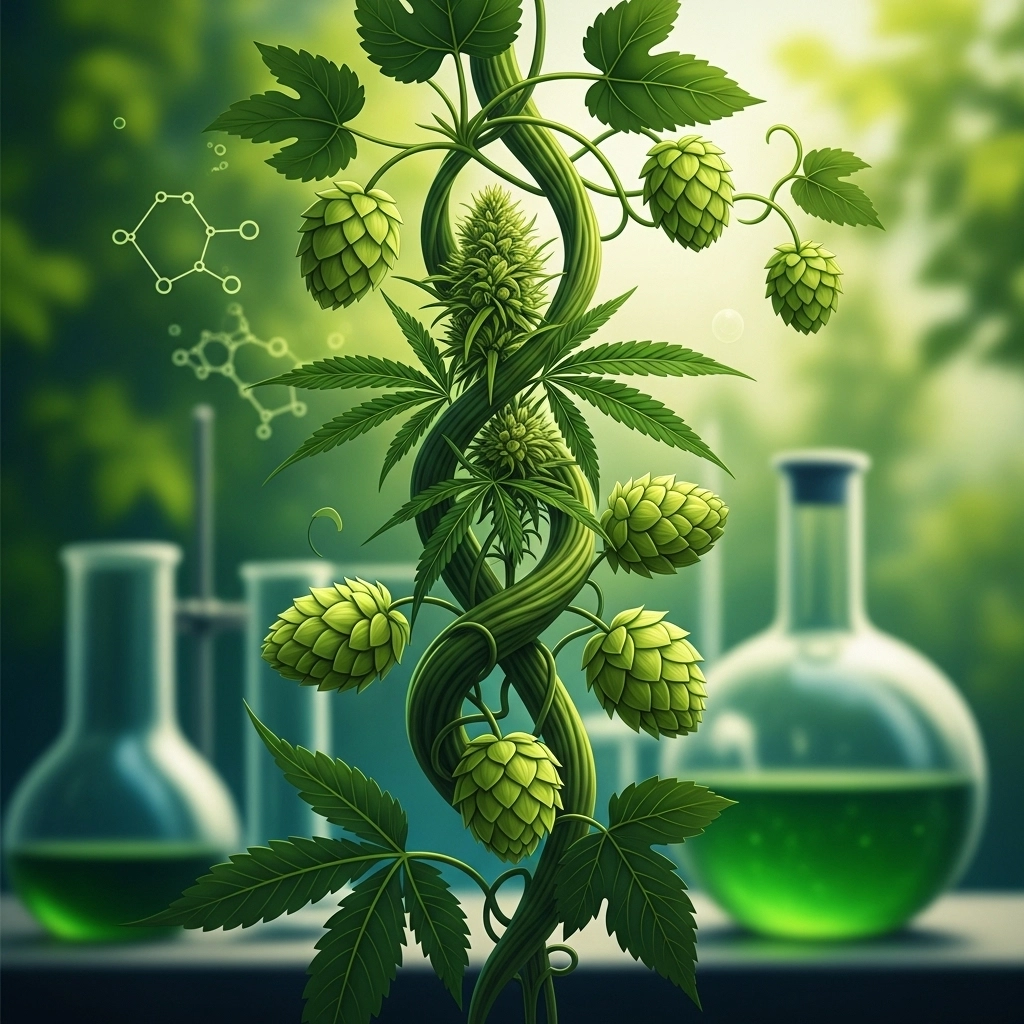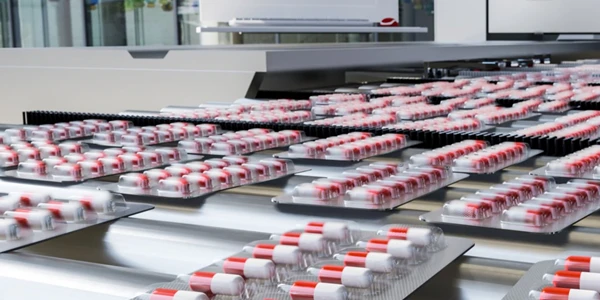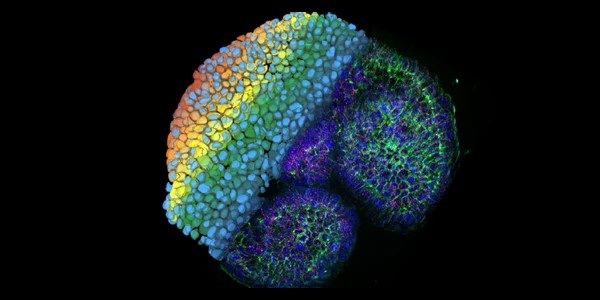Hemp vs. Hops: Unearthing the Surprising Connections and Future Trends
The deep connection between hemp and hops begins with their shared lineage within the Cannabaceae family. This relatively small family of flowering plants encompasses approximately 170 species across 11 genera. Among them are the prominent Cannabis (which includes both hemp and marijuana) and Humulus (hops). Modern phylogenetic studies reveal that the relationship between Cannabis and Humulus is remarkably strong, far more so than with other genera in the Cannabaceae family. This close evolutionary tie provides a foundational explanation for the numerous similarities observed between these two seemingly disparate plants. Understanding this shared botanical root is crucial to appreciating their parallel developments and potential future collaborations. While their evolutionary paths converge, hemp and hops exhibit significant divergences in their physical characteristics and primary uses. These differences are largely a result of selective cultivation over centuries, tailoring each plant for specific human applications. Feature Hemp (Cannabis sativa) Hops (Humulus lupulus) Growth Habit Standing herb; typically tall, single main stalks with fewer leaves and branches. Twining or trailing herb; long vines growing upwards of 20-30 feet. Flower Type Produces female flowers (buds). Produces distinctive female flower cones. Primary Uses Fiber, oil, textiles, medicinal extracts (CBD, low-THC). Predominant ingredient in beer (bitterness, aroma, preservation). Chemical Profile Rich in cannabinoids (THC, CBD), flavonoids, and diverse terpenes. Contains specific terpenes, resins, and bitter acids. Despite these distinctions, both plants boast unique chemical profiles of cannabinoids (in Cannabis), flavonoids, and terpenes. These compounds are largely responsible for the distinct flavors, aromas, and even some physiological effects associated with their respective products. The journey from seed to usable product reveals further parallels and distinctions in the cultivation and processing of hemp and hops. Many agricultural practices employed for one can inform the other, highlighting their shared botanical needs. Shared Cultivation Practices: Female Plant Focus: For both Cannabis and Humulus, unpollinated female plants typically yield the richest production of desirable resins and oils, making them the preferred choice for cultivation. Varietals and Terroir: Both plants exist as "varietals," where specific strains and growth locales contribute to distinct flavor and chemical profiles, much like wine grapes. Cross-Pollination Concerns: Natural cross-pollination can occur, necessitating careful management of growing conditions to maintain the integrity of specific strains (e.g., ensuring low-THC hemp). Harvest Timing: Optimal harvesting times vary significantly with the strain, location, soil conditions, and other environmental parameters. Growers rely on intrinsic signs of ripeness, using their senses to determine the perfect moment. Post-Harvest Care: Both require immediate drying post-harvest to prevent mold and rot, preserving their valuable compounds. Processing Divergence:
The primary differences in processing arise from the intended end-product and the physical nature of the plants. Hemp Processing: Hemp destined for fiber or seed oil requires specialized milling and grinding machinery designed for its tough, coarse stalks. Fiber harvests involve longer cuts, while seed harvests target the upper plant sections. For medicinal extracts, fine grinding mills with adaptable sieves are used to achieve small particle uniformity, maximizing extraction efficiency. Hops Processing: Hops harvesting focuses exclusively on collecting the flower cones for brewing. Vines are typically cut down en masse, and specialized equipment separates the cones from other plant matter. Unlike hemp, hops are generally added to beer in whole or pelleted form, either directly or within mesh vessels, eliminating the need for extensive milling or grinding. Beyond their shared ancestry, the most compelling chemical similarity between Cannabis and Humulus lies in their production of aromatic terpene compounds. These highly volatile organic molecules are the primary architects of the complex flavors and fragrances that define both plants. The specific forms and complexities of these cyclic hydrocarbons vary significantly across the diverse varieties of hops and cannabis. Over centuries of cultivation, specific classes and types of terpenes have been selectively bred for, or against, to achieve desired profiles for various uses. Some of the most common terpenes found in both plants include: Myrcene: Often associated with earthy, musky notes, and found in mangoes. Caryophyllene: Offers spicy, peppery aromas and is unique for its ability to interact with the endocannabinoid system. Humulene: Contributes woody, earthy notes, also found in basil and sage. Limonene: Characterized by citrusy, bright aromas. Pinenes: Known for their distinctive pine-like scent. While Cannabis generally boasts a more diverse terpene profile than Humulus, hops do contain significant amounts of myrcene, caryophyllene, and other terpenes, some of which possess known physiological effects. For instance, caryophyllene is believed to interact with the body's endocannabinoid receptors, potentially enhancing the bioavailability and effects of cannabinoids like THC and CBD. This "entourage effect," where compounds work synergistically, underscores the profound chemical interplay within these plants. Given the natural synergy and shared chemical compounds, it's no surprise that the relationship between beer and cannabis is being explored with increasing intensity. The quest for unique terpene and chemical profiles that combine to produce desirable qualities and effects is driving innovation in the beverage industry. Alcohol and beverage firms have closely monitored the evolving cannabis industry, with many now directly investing in or partnering with cannabis ventures. The cannabis market offers certain competitive advantages over traditional alcohol, notably the multitude of consumption routes beyond just liquid form. Some industry analysts even speculate that cannabis products could begin to significantly outcompete alcohol in the coming years, especially as legal landscapes continue to shift. Hemp-infused beers, which contain no CBD or THC, have been available for years, leveraging the aromatic contributions of hemp terpenes. However, as cannabis gains broader legal acceptance and alcohol producers deepen their involvement, we are likely to see a greater presence of novel products, such as CBD-infused alcoholic beverages. This emerging market promises exciting new flavor experiences and consumption choices for consumers. The relationship between hemp and hops is a testament to nature's intricate design and humanity's ingenuity. From their shared botanical roots in the Cannabaceae family to their distinct yet complementary chemical profiles, these two plants continue to surprise and inspire. As research into their diverse qualities and synergistic compounds advances, the possibilities for innovation in various industries, particularly beverages and wellness, are boundless. Cheers to a greener, more interconnected future! Explore the cutting-edge of cannabis science and find essential equipment and product listings by visiting the LabX Cannabis Laboratory application page. Are hemp and hops botanically related?
Yes, both hemp (Cannabis sativa) and hops (Humulus lupulus) belong to the same plant family, Cannabaceae, indicating a close evolutionary and genetic relationship. What are terpenes, and why are they important in both hemp and hops?
Terpenes are aromatic organic compounds responsible for the distinct flavors and fragrances of both hemp and hops. They contribute to the sensory experience and may also offer various physiological effects, sometimes working synergistically with other compounds. How do the cultivation and processing of hemp and hops differ?
While both benefit from similar cultivation practices like focusing on female plants and careful harvesting, their processing diverges based on their end-use. Hemp processing involves milling for fiber or oil, while hops processing focuses on collecting and drying flower cones for brewing. What is the future outlook for hemp and hops in the beverage industry?
The future looks promising, with increasing exploration of their synergistic chemical profiles. Expect to see more hemp-infused beverages, and as cannabis legalization expands, the emergence of CBD-infused alcoholic and non-alcoholic drinks.

ImageFX (2025)
At first glance, hemp and hops appear to inhabit entirely different worlds. One is celebrated for its versatile fibers and wellness compounds, while the other is a cornerstone of the brewing industry. Yet, beneath their distinct applications lies a fascinating and often overlooked botanical kinship. These two plants, integral to human history and modern commerce, share a surprising evolutionary past, genetic similarities, and a wealth of chemical compounds that bind them in a natural synergy. This guide delves into the intricate relationship between hemp and hops, exploring their shared heritage, key differences, and the exciting implications for their future.
Exploring the Cannabaceae Family: The Shared Origins of Hemp and Hops
Key Differences: Hemp vs. Hops Plant Characteristics and Uses
Hemp and Hops Cultivation: Growing, Harvesting, and Processing Methods
The Terpene Connection: Aromatic Compounds in Hemp and Hops
Innovations in Brewing: Hemp, Hops, and CBD Beverages
Final Thoughts on Hemp and Hops
Frequently Asked Questions










